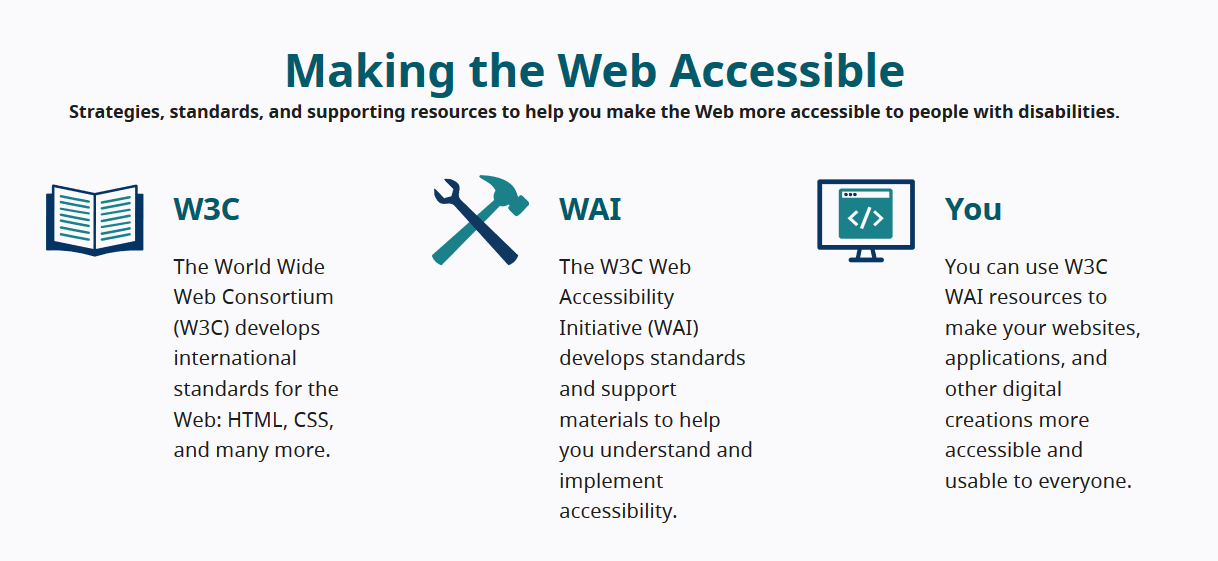Created in March 1998, the Advisory Board provides ongoing guidance to the W3C Team on issues of strategy, management, legal matters, process, and conflict resolution. The Advisory Board also serves the W3C Members by tracking issues raised between Advisory Committee meetings, soliciting Member comments on such issues, and proposing actions to resolve these issues. The Advisory Board manages the evolution of the Process Document. The Advisory Board hears appeals of Member Submission requests that are rejected for reasons unrelated to Web architecture. For several years, the AB has conducted its work in a
public wiki.
The elected Members of the Advisory Board participate as individual contributors and not representatives of their organizations. Advisory Board participants use their best judgment to find the best solutions for the Web, not just for any particular network, technology, vendor, or user.
 The redesigned W3C WAI website makes it easier to get information to help you improve web accessibility. The visual design, information architecture, navigation, and overall user experience is all new. Much of the content is revised, and we plan to revise more in the coming months. The redesign makes it easier to skim pages, read content, find specific information, and discover new resources. It’s also easier for the community to be involved in improving resources. Please see W3C WAI Website Redesign Information for:
The redesigned W3C WAI website makes it easier to get information to help you improve web accessibility. The visual design, information architecture, navigation, and overall user experience is all new. Much of the content is revised, and we plan to revise more in the coming months. The redesign makes it easier to skim pages, read content, find specific information, and discover new resources. It’s also easier for the community to be involved in improving resources. Please see W3C WAI Website Redesign Information for:
